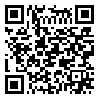Methods: In a cross
sectional descriptive analytical study a total of 536 ART cycles in infertile
patients treated at the Infertility Department of Vali-e-Asr Hospital &
Vali-e-Asr Reproductive Health Research Center from October 1999- March 2003 were
evaluated using a questionnaire dealing with the parameters affecting ART
outcome.
Results: There was a
total pregnancy rate of 21% with a multiple pregnancy rate of 12%. Increased
age had a negative effect on pregnancy rate with a significant difference over 40
years (p<0.05). Pregnancy rate was higher with increased number of
transferred embryos but it was only statistically significant when three versus
two embryos were transferred (p<0.008). When more than three embryos
transferred, although there was an increase in pregnancy rate, the difference
was not statistically significant, but there was a significant increase in
multiple pregnancy rate.
Conclusions: The maximum number of transferred embryos in ART cycles should not precede three
embryos especially in age groups less than 40 and also when good quality
embryos are available.
| Rights and permissions | |
 |
This work is licensed under a Creative Commons Attribution-NonCommercial 4.0 International License. |


